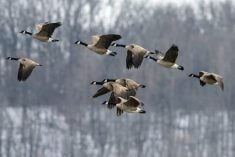About 22 percent of American bee colonies died over the winter in 2011-12, which is less than bee losses in recent years.
Based on a U.S. Department of Agriculture survey of beekeepers, in conjunction with the Apiary Inspectors of America and a project called the Bee Informed Partnership, total colony losses last winter were 21.9 percent, the USDA announced at the end of May.
The figure represents an eight percent drop from 2010/2011, when 30 percent of colonies died over the winter. In the winter of 2009-10, total colony losses were 34 percent.
Read Also

Women who fed a nation
More than 40,000 young women supported the war effort between the 1940s and early 1950s, helping grow and harvest crops amid labour shortages. They were called Farmerettes.
Jeff Pettis, lead bee researcher for the USDA, speculated the mild winter might have boosted the rate of survival. This January was the fourth warmest on record in the U.S.
“A warm winter means less stress on bee colonies and may help them be more resistant to pathogens, parasites and other problems.”
Despite the drop in bee losses, Colony Collapse Disorder continues to pose a problem for U.S. beekeepers. Of the more than 5,500 beekeepers who participated in the survey and reported losses, approximately 37 percent couldn’t find dead bees in the hive.
The loss of a colony, without the detection of dead bees, is a key marker of CCD.
A spokesperson for the Canadian Association of Professional Apiculturists said bee colony losses for Canada would likely be released later this month.
In 2010-11, 29.3 percent bee colonies in Canada died over the winter or were deemed to weak for commercial production.















